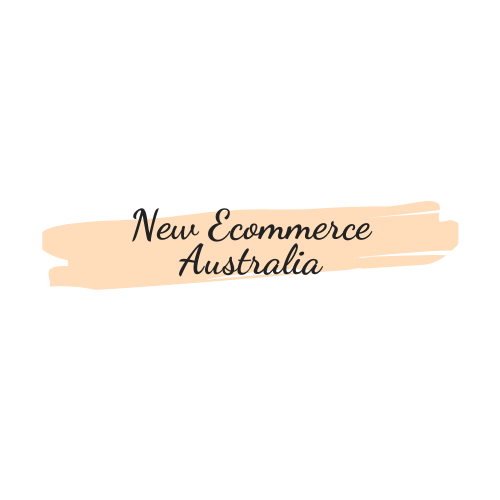See our services : Blockchain development, Backbase Solutions
Email Marketing to Improve Ecommerce Conversion Rates
Email marketing can offer brands the highest ROI of any marketing strategy. Email marketing is the cornerstone of any multichannel marketing campaign. According to a recent study it has a 1:42 return on investment. This article will provide tips for optimizing email marketing’s eCommerce conversion rate.
However, if your strategy is not clearly defined, your email list will be just that: an email address list.
This post will cover everything you need to know about eCommerce conversion rates for email marketing.
Let’s get to the point.
1. Email Marketing 101: The Elements of the Perfect Email
There are some elements to a marketing email that you must be strategic about. A relevant and specific subject line is the first. Good subject lines are specific and address the reader directly. Don’t be too broad and avoid using clickbait language in your subject lines.
David Ogilvy: “When you have written your headline you have spent eighty-cents of your dollar.”
Second, email addresses should be addressed to the recipient by their name and other personal characteristics. More on this later.
The third reason has a call-to-action is that it clearly states what the reader should do. What should your reader do after they finish reading?
The Global Awarded Magento POS – 2021 Stevie Awards Product Innovation winner provides you with a powerful Magento POS extension as well as 24/7 support. Other products : Shopify Pos, Bigcommerce Pos, Woocommerce Pos
Be human when you send an email. Make your email conversational so it sounds like you’re speaking to a friend at your favorite coffee shop.
branding should also be considered. It shouldn’t be difficult for the recipient of the email to identify who it is. Your logo, color scheme, and content should clearly communicate your brand and its scope.
2. Segmenting Your Email List
Segmentation is the process of dividing an email list into categories based on demographics and history. Segmentation is a data-driven strategy that allows for targeted conversions.
Segmentation allows you to send a message that resonates more with a particular group of people.
When segmenting your email list, ask yourself these questions:
- Is this person a repeat client?
- Do you have a particular product or category that a customer purchases or browses on your site?
- What is their browsing history like?
- Are they classified as a particular demographic group according to their gender, age or location?
These key questions will help you segment your email list. Next, you can start creating targeted messages. This section will provide more information.
3. The Art of Personalized Emails
An email that is personalized and well-written leaves no room for error. It shouldn’t be left out of the recipient’s inbox wondering what the message means to them. You should tailor the email message to a specific conversion action and collect as much information as you can about each person on your list.
To craft the best message for your emails, you will need to create buyer personas of the people you want. You should also remember to make your brand personality real so that you can establish a connection with the reader.
But most importantly, make sure that personalization goes beyond just a name. Here are some tips:
- Use the local language and time of each customer
- Ask them pertinent questions based upon their profile
- You can send them a list with suggested products based on your profile and/or previous purchasing habits.
4. Emails that get results
Let’s now dive into the important email types that you need to know and how to use them within your eCommerce business for higher conversions.
I. The Win-Back Email
This email series, called win-back, is designed to reactivate inactive customers or subscribers. This type of email must have a well-structured structure in order to work. A 4-part drip email campaign should be used with the overarching goal to re-engage customers. These are the emails:
WIN-BACK E-Mail ONE
This email should serve as a reminder. This email will remind the reader about your brand. One example subject line would be: “We haven’t seen you around lately. All the best ?”
Because it asks a question and shows concern, this subject line is more likely than others to get a reply. The likelihood of receiving a positive response increases if you include a call-to-action. Check out our most recent blog posts. Pick up from where you left .
WIN-BACK EMAIL TWO
If the subscriber did not take action on the first email, the second one should contain an incentive. To entice them back, you might send a discount email. A great subject line would be: “How about 20% off your next purchase?”
WIN-BACK EMAIL TROIS
The third email should inform the reader that they are giving them a last chance to not miss out on a great deal. It should be done politely and courteously. The same incentive should be offered as before, but now you can set a time frame and create an urgency .
WIN-BACK EMAIL FOUR
This is the “Goodbye” email. Let the inactive person know that you care and would prefer not to continue adding to their unread emails. Next, give them the opportunity to continue receiving emails via the call-to action.
II. II.
According to research from 2016, 68.8% online shoppers abandon their carts after completing a purchase. Interestingly, 29.9% of all follow-up emails usually lead to purchased, according to 2015 data.
You may be able to segment people who have abandoned their carts after segmentation. To motivate them to buy, you might send them a shipping coupon.
III. III.
We all love discounts, and this email can greatly increase your conversions .
Use a subject line that evokes curiosity. Avoid using cliche phrases like “click to send” and “click to open”. Honesty is the best policy, so make sure you deliver real value to your readers. It is important to make it clear that they will be able to open the discount email.
These are some examples of subject lines:
- We give you a gift…
- What about major savings for this month?
- This is how we say, “Thank you!”
Get to the point. It’s not worth trying to be funny or entertaining by being long-winded. Your email should convey urgency, as we discussed previously.
IV. IV.
It is important to use curated emails. This allows you to stay in touch with your readers and offers them real value. It also helps build your brand’s authority. Curated emails are a great way to share valuable information and resources with your subscribers.
When choosing content for curated email messages, there are two key factors you should consider: audience value and business alignment. You should make sure that the content you send is relevant to what you offer, while still providing value for readers.
Use user-generated content in your curated email newsletter to increase relevance and personal appeal.
V. The Thank You Email
This email is sent to follow up on a customer’s desired action. Perhaps you requested that your reader subscribe to your newsletter, or buy a product.
These emails are a way to assure the customer that they will get what they have requested. These emails should be sent immediately after the subscriber or customer has completed the trigger action.
These email adaption techniques will allow you to personalize your email marketing campaigns and align them to your buyer personas. This will make your email sound more personal, even if it’s using autoresponders. These are the components of an email:
- Include specific details about the trigger action
- Mention the name and email address of the customer
- Use the right greeting
- Recognize the customer for taking the desired action
- Positive and optimistic attitudes are key to success
- Use a suitable closing
These emails may be an opportunity for upselling depending on how you approach them. Remember, your primary goal is to express gratitude to your reader. This should be obvious from your opening subject line through your closing sentence.
source https://www.nosto.com/blog/email-marketing-ecommerce-conversion-rate/

